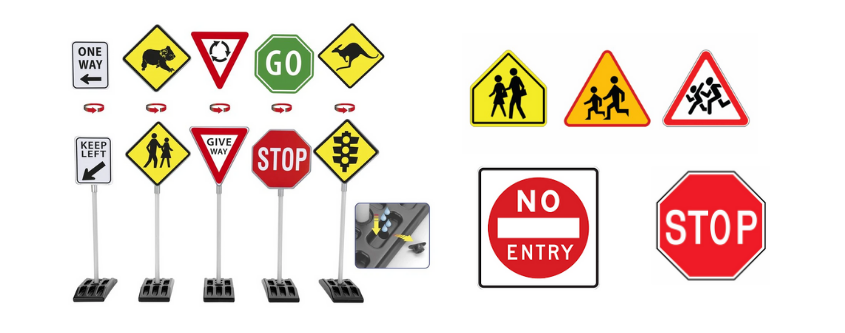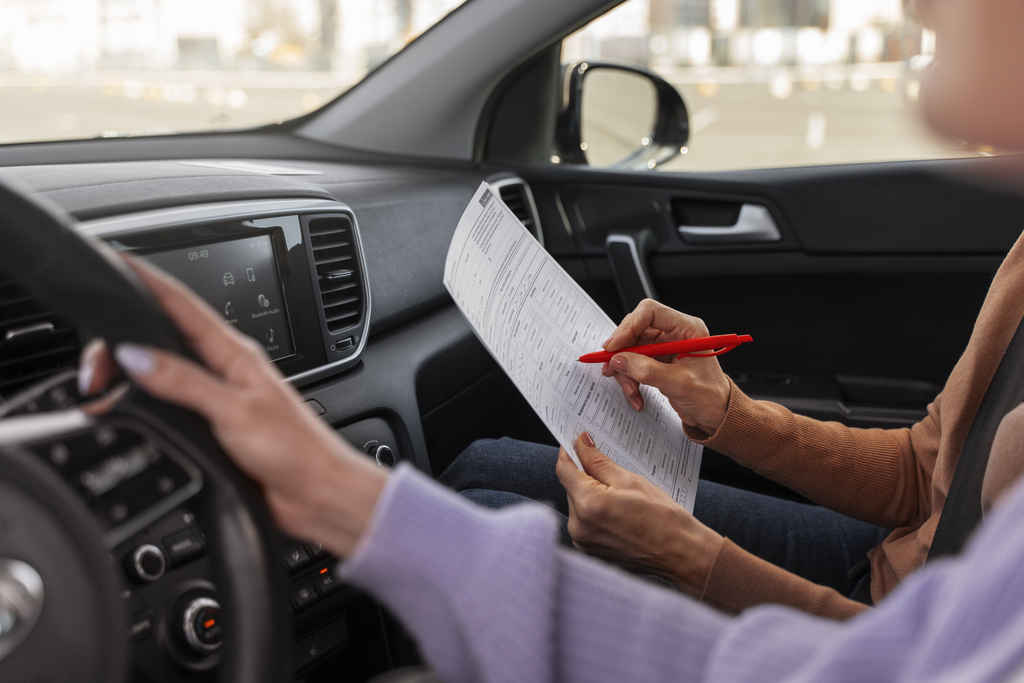Road Signs You Must Understand Before Hitting The Road
By Medinah on Jan 15, 2021
We agree that driving on Canadian roads is not always a clean and easy task and adding to the mess are a whole lot of road signs. The basic purpose of the driving signs is to provide maximum safety to the driver and other road users. It helps clarify the road situation. It may warn you about the upcoming driving issues or direct you to the right path. Where these can be an ultimate source of guidance, some traffic signs may confuse you instead of providing a clearer picture.
Once you are on the road, all you need is to OBEY the traffic rules and road signs to avoid breaking the territory laws, but it's only possible if you are wise enough to understand the meaning of every sign and make the sense of it.
Give this blog a read and get to know the variety of road signs better than you would probably encounter.
Types
There is a long list of traffic signs but to drive safely, you must know the following three categories at the least.
Regulatory Road Signs
It conveys information about driving rules, traffic laws, and road safety protocols to keep the traffic in a regular, undisturbed flow. Where almost every regulatory sign must be followed all the time, there are few conditional laws applied as per the time, location, speed, and weather. The typical examples include stop, speed limit, one-way signs, and yield signs. Although, they do not come in a specific shape, size, or color, making them difficult to categorize.
Warning Road Signs
It goes without saying but, these signboards are for the alert. It let you know about the possible road hazard. It gives you an idea about upcoming potential traffic, pedestrian, or animal crossings. The common examples are bend ahead, roundabout ahead, slippery road conditions, etc. Coming to its presentation, they are usually pennant shaped and come in striking yellow color with a reflective surface to catch the driver’s attention.
Guide Road Signs
Generally used for delivering location-specific information, guide signs are designed in a rectangular shape with green or white color. Depending on the message, their shape and color can vary. The common examples are freeway exit or entry signs, hiking, parking, and rest stop signs. Consider them an instant guide to keep you up-to-date about the current location, road, and driving situation.
Shapes
Do you know how many road sign shapes are present at the time, universally? You must have guessed it less but the right number is NINE! Every shape has a specific meaning and message to convey. Doubtlessly, the shape of a road sign is an essential aspect to understand what it means.
The Most Commonly Used Shapes Are:
Octagons - Specifically dedicated to displaying the stop signs, asking the driver to make a FULL STOP at the exact road or turn.
Equilateral triangles - Designed for warning signs to make you vigilant about upcoming layouts such as hills, mountains, or tunnels. Typically, their design is made exclusively with the addition of red borders.
Circles - If you find these on the road with red borders, it means either legal order or prohibition on a certain driving act. Signboards with a blue border are posted to deliver driving/road instructions.
Pentagons - These house-shaped signboards are generally used within school zones. They are painted bright, but their distinctive shape will catch the driver’s attention instantly.
Crossbucks - Looking to massive X on a road sign? Get alert, it is always indicating the upcoming railway crossings. It is a yield symbol and you must stop only while the train is crossing the territory. These can be complemented with additional safety features such as automatic flashing lights, reflective surfaces, ringing bells, or a gate.
Rectangular - We can say, they are pretty much restricted to the motorbike ride rules and are used in combination with circular or triangular signs typically. Otherwise, it delivers hazard warnings for instance hidden dips ahead.
Remaining with less use and importance are Pennants, Diamonds, and Trapezoids.
Colors
✓ The black background is used for regulatory road signs explaining general road regulations
✓ The blue background is dedicated to guiding signboards, informing about the available services of the specific location. The most common use is for lodging or fuel stations.
✓ The Brown background is for public recreation, highlighting National and Provincial Parks or campgrounds which help you map out their locations.
✓ The Green background is only for the guide signboards or we can say informational signs which tell you about the distance you have to travel to reach your destination, directs you on the right path, and tells you the route numbers.
✓ The Red background is an alarming color and specified for displaying only stop and yield signs.
✓ The Purple background signboards are pretty rare but wherever you see them, it means there are amusement parks or wineries, nearby.
✓ The Orange background is for construction sites, warning about the maintenance work. Do you know what will happen if you don’t follow this sign? You will not only be fined but fined double in price!
✓ The White color is only for regulatory road signs, and if you fail to follow the law, you will face a ticket-able offense.
✓ A Yellow background means warning! So, stay attentive whenever you see a shiny bright yellow board posted right up on the road.
Additional Information
Persons
On a road sign, if you see the “person”, it symbolizes pedestrian way ahead
Numbers
Road signs with numbers usually depict the speed limits, junction numbers on the freeways, or tell the height of the tunnels or mountains.
Arrows
Seeing arrows on the board? It means they are referring to a certain direction, leading you to your desired location. Usually used in regulatory and guide signs.


